- Acromioclavicular (AC) Joint Osteoarthritis
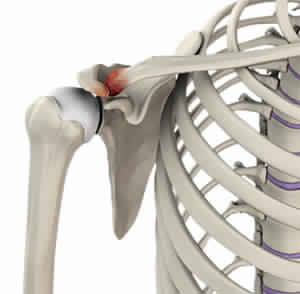
The acromioclavicular joint is part of the shoulder joint. It is formed by the union of the acromion, a bony process of the shoulder blade, and the outer end of the collar bone or clavicle. The joint is lined by cartilage that gradually wears with age as well as with repeated overhead or shoulder level activities such as basketball. The condition is referred to as AC arthritis or acromioclavicular arthritis.
Know More - Arthritis of the Shoulder
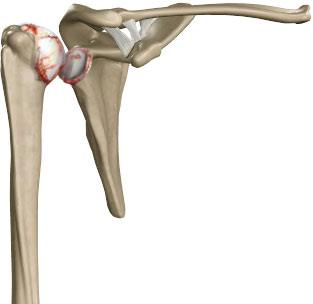
The term arthritis literally means inflammation of a joint but is generally used to describe any condition in which there is damage to the cartilage.
Know More - AC Joint Separation
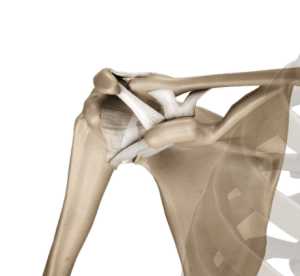
The acromioclavicular (AC) joint is one of the joints present within your shoulder. It is formed between a bony projection at the top of the shoulder blade (acromion) and the outer end of the clavicle (collarbone). The joint is enclosed by a capsule and supported by ligaments.
Know More - Clavicle Fracture
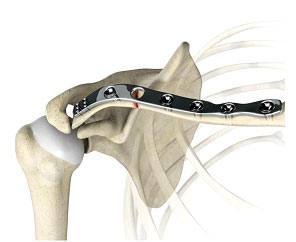
The break or fracture of the clavicle (collarbone) is a common sports injury associated with contact sports such as football and martial arts, as well as impact sports such as motor racing.
Know More Launch Movie - Distal Bicep Tendon Rupture
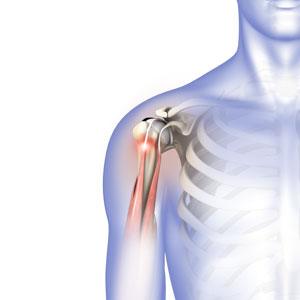
The biceps muscle is located in the front side of your upper arm and functions to help you bend and rotate your arm. A complex distal biceps tear requires surgery.
Know More Launch Movie - Frozen Shoulder

Frozen shoulder, also called adhesive capsulitis, is a condition in which you experience pain and stiffness in your shoulder. The symptoms appear slowly, worsen gradually. If diagnosed within the first month, a cortisone shot may resolve the condition. Otherwise, physical therapy is the treatment of choice. If PT fails, then a manipulation under anesthesia is warranted.
Know More Launch Movie - Glenoid Fractures
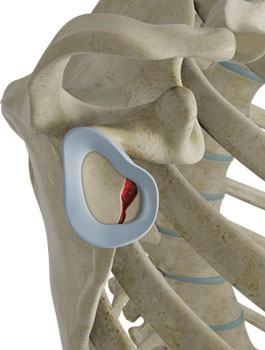
Fractures of the glenoid are rare but can occur due to major trauma or during high-energy sports activities.
Know More - Proximal Biceps Tendinitis
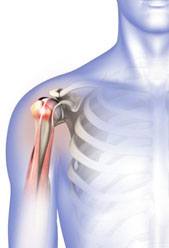
Proximal biceps tendinitis is the irritation and inflammation of the biceps tendon at the shoulder joint. It usually is treated with a cortisone shot and physical therapy.
Know More - Proximal Humerus Fractures
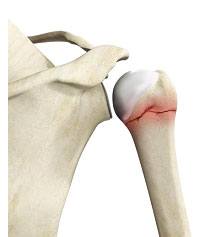
Fractures of the proximal humerus are common in elderly individuals suffering from osteoporosis. In younger individuals, a severe trauma such as a fall from a height on an outstretched hand or motor vehicle accident can cause these fractures.
Know More - Rotator Cuff Pain
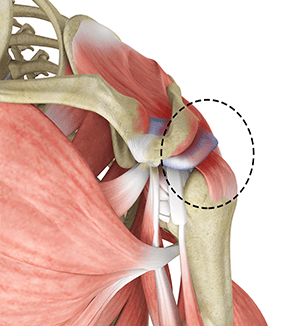
The rotator cuff consists of a group of tendons and muscles that surround and stabilize the shoulder joint. These tendons allow a wide range of movement of the shoulder joint across multiple planes. Irritation or injury to these tendons can result in rotator cuff pain.
Know More - Rotator Cuff Tear

A rotator cuff is a group of tendons in the shoulder joint that provides support and enables a wide range of motion.
Know More Launch Movie - Shoulder Dislocation

Sports that involve overhead movements and repeated use of the shoulder at your workplace may lead to sliding of the upper arm bone from the glenoid. The dislocation might be a partial dislocation (subluxation) or a complete dislocation causing pain and shoulder joint instability.
Know More - Shoulder Impingement

Shoulder impingement is the inflammation of the tendons of the shoulder joint. It is one of the most common causes of pain in the shoulder. Shoulder impingement is also called bursitis, swimmer’s shoulder, tennis shoulder or rotator cuff tendinitis.
Know More - Shoulder Instability

Shoulder instability is a chronic condition that causes frequent dislocation of the shoulder joint. The anterior or posterior labrum may be torn.
Know More Launch Movie - Shoulder Labral Tear
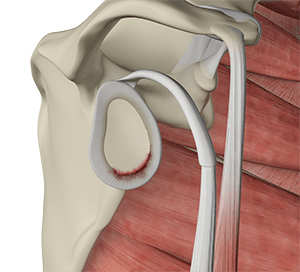
Traumatic injury to the shoulder or overuse of the shoulder (throwing, weightlifting) may cause the labrum to tear. In addition, aging may weaken the labrum leading to injury.
Know More - Shoulder Pain

Pain in the shoulder may suggest an injury, which is more common in athletes participating in sports such as swimming, tennis, pitching, and weightlifting.
Know More Launch Movie - Shoulder Trauma
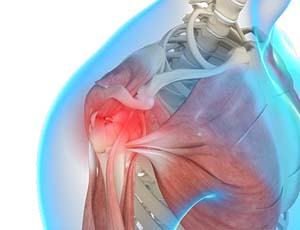
Shoulder injuries most commonly occur in athletes participating in sports such as swimming, tennis, pitching, and weightlifting. The injuries are caused due to the over usage or repetitive motion of the arms.
Know More - SLAP Tears

The term SLAP (superior –labrum anterior-posterior) lesion or SLAP tear refers to an injury of the superior labrum of the shoulder.
Know More Launch Movie













